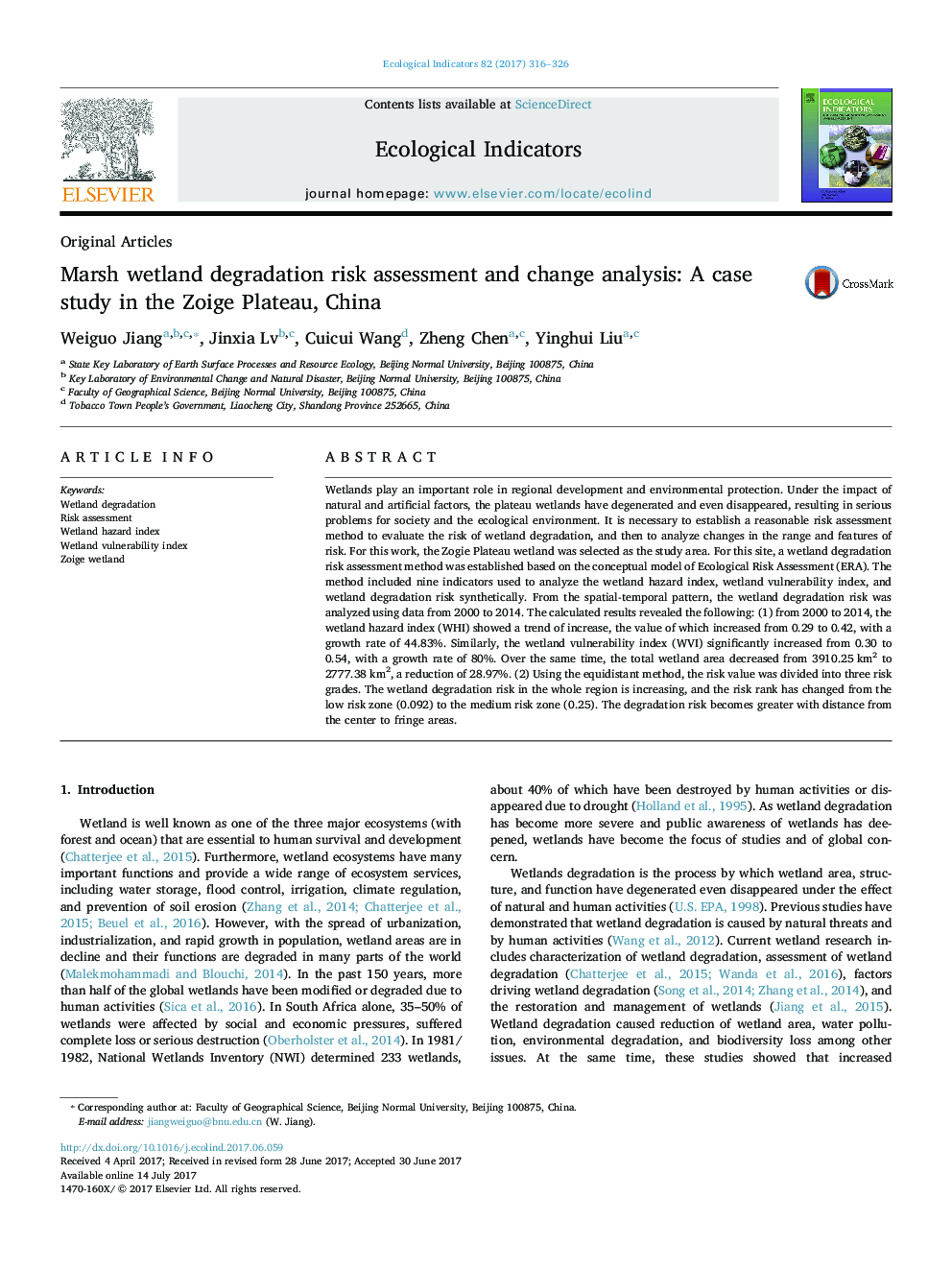| کد مقاله | کد نشریه | سال انتشار | مقاله انگلیسی | نسخه تمام متن |
|---|---|---|---|---|
| 5741333 | 1617120 | 2017 | 11 صفحه PDF | دانلود رایگان |

- The wetland degradation risk assessment method was established including 9 indicators based on the conceptual model of Ecological Risk Assessment (ERA).
- The wetland hazard index was calculated based on the external impact factors, which include natural disaster and human activities.
- The wetland vulnerability index was calculated based on three wetland attribute indicators: wetland area, wetland structure, and wetland function.
- The wetland degradation risk index was calculated based on the wetland hazard index and wetland vulnerability index.
- The wetland degradation risk change were quantitatively analyzed from the spatial-temporal pattern from 2000 to 2014.
Wetlands play an important role in regional development and environmental protection. Under the impact of natural and artificial factors, the plateau wetlands have degenerated and even disappeared, resulting in serious problems for society and the ecological environment. It is necessary to establish a reasonable risk assessment method to evaluate the risk of wetland degradation, and then to analyze changes in the range and features of risk. For this work, the Zogie Plateau wetland was selected as the study area. For this site, a wetland degradation risk assessment method was established based on the conceptual model of Ecological Risk Assessment (ERA). The method included nine indicators used to analyze the wetland hazard index, wetland vulnerability index, and wetland degradation risk synthetically. From the spatial-temporal pattern, the wetland degradation risk was analyzed using data from 2000 to 2014. The calculated results revealed the following: (1) from 2000 to 2014, the wetland hazard index (WHI) showed a trend of increase, the value of which increased from 0.29 to 0.42, with a growth rate of 44.83%. Similarly, the wetland vulnerability index (WVI) significantly increased from 0.30 to 0.54, with a growth rate of 80%. Over the same time, the total wetland area decreased from 3910.25Â km2 to 2777.38Â km2, a reduction of 28.97%. (2) Using the equidistant method, the risk value was divided into three risk grades. The wetland degradation risk in the whole region is increasing, and the risk rank has changed from the low risk zone (0.092) to the medium risk zone (0.25). The degradation risk becomes greater with distance from the center to fringe areas.
115
Journal: Ecological Indicators - Volume 82, November 2017, Pages 316-326